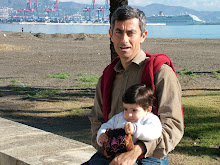A solar eclipse occurs when the moon passes between the Sun and the Earth so that the Sun is fully or partially covered. This can only happen during a new moon, when the Sun and Moon are in conjunction as seen from the Earth. At least two and up to five solar eclipses can occur each year on Earth, with between zero and two of them being total eclipses. Total solar eclipses are nevertheless rare at any location because during each eclipse totality exists only along a narrow corridor in the relatively tiny area of the Moon's umbra.
eclipses. Total solar eclipses are nevertheless rare at any location because during each eclipse totality exists only along a narrow corridor in the relatively tiny area of the Moon's umbra.
A total solar eclipse is a spectacular natural phenomenon and many people travel to remote locations to observe one.
In ancient times, and in some cultures today, solar eclipses have been attributed to supernatural causes. Total solar eclipses can be frightening for people who are unaware of their astronomical explanation, as the Sun seems to disappear in the middle of the day and the sky darkens in a matter of minutes.
There are three types of solar eclipses:
A total eclipse occurs when the Sun is completely obscured by the Moon. The intensely bright  disk of the Sun is replaced by the dark silhouette of the Moon, and the much fainter corona is visible. During any one eclipse, totality is visible only from at most a narrow track on the surface of the Earth. The reason each total eclipse is only visible over a small part of the globe is because the Moon's shadow is relatively small when it falls on the Earth.
disk of the Sun is replaced by the dark silhouette of the Moon, and the much fainter corona is visible. During any one eclipse, totality is visible only from at most a narrow track on the surface of the Earth. The reason each total eclipse is only visible over a small part of the globe is because the Moon's shadow is relatively small when it falls on the Earth.
An annular eclipse occurs when the Sun and Moon are exactly in line, but the app arent size of the Moon is smaller than that of the Sun. For this reason, the Sun appears as a very bright ring, or annulus, surrounding the outline of the Moon. Another factor determining the type of eclipse is the elliptical shape of the Moon's orbit. This means that when the Moon is further away than average, it does not completely cover the Sun. This leaves a ring, or annulus of the solar disc exposed, hence the name annular eclipse.
arent size of the Moon is smaller than that of the Sun. For this reason, the Sun appears as a very bright ring, or annulus, surrounding the outline of the Moon. Another factor determining the type of eclipse is the elliptical shape of the Moon's orbit. This means that when the Moon is further away than average, it does not completely cover the Sun. This leaves a ring, or annulus of the solar disc exposed, hence the name annular eclipse.
A partial eclipse occurs when the Sun and Moon are not  exactly in line and the Moon only partially obscures the Sun. This phenomenon can usually be seen from a large part of the Earth outside of the track of an annular or total eclipse. However, some eclipses can only be seen as a partial eclipse, because the umbra never intersects the Earth's surface, passing above the Earth's polar regions.
exactly in line and the Moon only partially obscures the Sun. This phenomenon can usually be seen from a large part of the Earth outside of the track of an annular or total eclipse. However, some eclipses can only be seen as a partial eclipse, because the umbra never intersects the Earth's surface, passing above the Earth's polar regions.
Due to tidal friction, the Moon is slowly drawing away from the Earth at a rate of four centimetres (1.6 inches) a year. So, in time, it will be too far away to just fit over the Sun's disc and all eclipses will be of the annular type.
Our distant descendants, if they are still around in a billion years time, will be the poorer for not having total eclipses to admire.
Here you have two flash animation related to Solar Eclipses
And the second one
For further information, please watch the video!
Please, you can download the worksheet by clicking here



Hola, soy Fran de 2º A.
ResponderEliminar¿Cuándo ocurre un eclipse solar, se queda en sombra solo una pequeña parte de la Tierra verdad?
Hola Fran, en la primera foto de esta entrada del blog, puedes ver una foto de la Tierra desde el espacio en la que se puede ver la sombra de la Luna. Debido a la rotación de la Tierra, ese punto se va trasladando, siendo una franja muy estrecha tan sólo los que ven el eclipse de Sol.
ResponderEliminarNos vemos mañana!
Este comentario ha sido eliminado por un administrador del blog.
ResponderEliminarHola Soy Rocío Abreu Vázquez de 2ºCD BIL. y las respuestas de las palabras del texto de "ASK AN ASTRONOMER" que yo creo son :
ResponderEliminar1- shadow
2- moon
3- casts
4- full
5- moon
6- Earth
7- darknesss
8- ecliptic
9- aroud
10- stay
Un saludo.